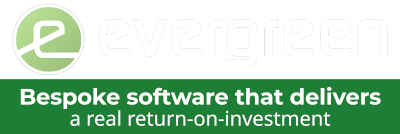Top 10 Website Usability Tips
8th October 2013 :: Author: Andrew Cope, Managing Director, Evergreen
How sure are you that your website is available, accessible, clear, reliable and relevant to the people who actually use it or who you would like to attract to it?
Take a look at our checklist below to see how your website measures up and what steps you can make to improve its usability.
Availability and Accessibility
Your website will be worthless if people try to access it and for whatever reason fail.
1) Site Load Time
is your site load time reasonable? Most people have broadband now but that just makes us all the more impatient. Do you have customers in rural areas? The Daily Telegraph reported in August that the UK average broadband speed in rural areas has risen to just 9.9Mbps, while average speeds in cities hit 26.4Mbps.
2) Site Not Found
It's back to customer patience again. If your visitors get an error trying to load a page on your website, they'll see the white '404 Not Found' page, which may lose you that customer. Invest in good hosting, double check that there are no broken links on your site and consider getting your web developer to create a custom 404 page, which can guide your visitors to content.
3) Be Responsive to Mobile Devices
Make sure your website can handle different screen sizes and slow connections, especially now that mobile devices are becoming increasingly popular for on-line shopping and information gathering.
Credibility
Who are you? What does your business do? Why should I trust you? These are all questions that visitors to your website will be asking themselves. Make sure that you have the right answers.
4) Branding
Your logo should be placed in the upper left side of your site, where it can be easily found and include a strap line that is descriptive about what your company does. Make sure your logo is linked to the home page in case visitors lose their way when browsing your site.
5) Who? What? How?
In order for potential customers to have faith in your brand, they need to know who you are, what you do (and that you do it well!) and how they can contact you. They need to have some background information about you and know how they can contact you not just to enquire about a sale but also if they need after sales support. Make sure you have a clear and concise 'About Us' page and list your contact information as text (not in an image) as it will get picked up by search engines, including local searches.
6) Honesty is the best policy
Content plays a key role for the perceived trustworthiness of your site so make sure you check it for grammatical and spelling errors. Don't be shy about blowing your own trumpet. If you are experts in your field then make sure people know about it. Having testimonials or well written and honest case studies on your website adds further endorsement that you are a company that can be trusted to do business with.
Readability, Clarity and Navigation
Lay the groundwork for a positive user experience by helping visitors to your site reach the goals that they had in mind when arriving at your website. Web users have short attention spans, so web content needs to be simple, consistent, organised and easy to skim through with good information architecture. Instead of allowing visitors to explore the site unaided, guide them smoothly through your site with clear navigation to show them what you have to offer.
7) Keep it Clear and Simple.
Get to the point as quickly as possible and make sure your major headings are clear and descriptive. Avoid jargon, long paragraphs and sentences, and use easy-to-understand shorter common words and phrases instead. Use bold and italic text sparingly and choose your hyperlinks carefully. As the saying goes, 'If you try and draw attention to everything, you'll draw attention to nothing.'' Keep the number of links or buttons reasonable. If visitors have to click too many times to reach their goal, they may become frustrated and abandon your site.
8) The Eyes Have It.
Website users tend to read the first few words of headings, titles and links when they're scanning a webpage, so make sure that the first two words of your headings count and that you have all your most important information at the top of the article or page. Use bullet point lists and bold or italic font as these are easier for the eyes to pick out when skimming through.Through research, Nielsen revealed that ''we swipe our eyes from left to right, then continue on down the page in an F shaped pattern, skipping a lot of the text in between.'' Using keyword-rich headings to set content apart will not only aid reading patterns but also enhance your SEO if you use heading tags (
9) Size Does Matter.
The number of older online users is growing rapidly and eyesight difficulties are common problems within this age group. Poor readability increases frustration and leads to site abandonment, so it's recommended that if your target audience falls into this category that you should use 12-point fonts as the default and/or install a button to let users increase text size as desired. Use large text for hypertext links to make them more prominent for clicking and apply this rule to command buttons and other interaction buttons to facilitate clicking. Lines that are well-spaced and the generous use of white space will also help improve the visibility of your site and avoid erroneous clicks. Make sure that all your images have appropriate ALT tags, which will not only assist visually impaired visitors but also benefit your SEO.
Relevancy
10) Content is King and Relevancy is Key.
It's important not to lose sight of who your customers are and why they should visit your site. Gather together information from sources such as customer feedback forms, social media etc. and add these to customer demographics from data stored in your Customer Relationship Management system to create a customer profile to help you determine the right tone and content of your website and make it relevant to your target market.

 Call us today on
Call us today on 

